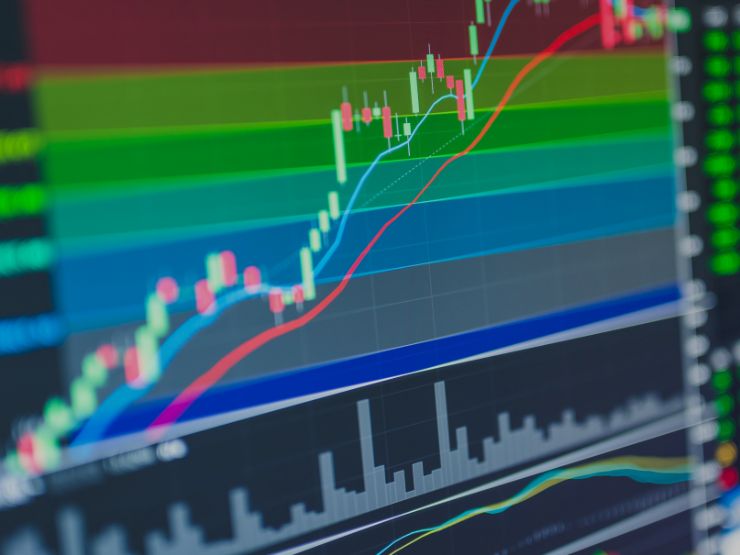-
Featured services
Harness innovation to deliver value
Ensure short-term stability as you design a roadmap for new use cases in your industry with emerging technologies.
Explore Connected Industries -
Services
View all services and productsLeverage our capabilities to accelerate your business transformation.
-
Services
Network as a Service
Popular Products
-
Private 5G
Our turnkey private 5G network enables custom-built solutions that are designed around unique use cases and strategies, and deployed, run and optimized through a full network-as-a-service model.
-
Managed Campus Networks
Our Managed Campus Networks services transform campus networks, corporate area networks and interconnected local area networks, and connect smart places and industries.
-
-
Services
Cloud Services
Popular Products
-
Cloud Migration and Transformation Services
Access the people, processes and technologies you need to deliver cloud migration projects that improve your return on investments.
-
Site Reliability Engineering Services
Get the most from your cloud investments when you harness our Site Reliability Engineering Services to support app development and lifecycle management.
-
-
Services
Edge as a Service
Client stories
-
Penske Entertainment and the NTT INDYCAR SERIES
Together with Penske Entertainment, we’re delivering digital innovations for their businesses – including INDYCAR, the sanctioning body of the NTT INDYCAR SERIES – and venues such as the iconic Indianapolis Motor Speedway, home to the Indianapolis 500.
-
Using private wireless networks to power IoT environments with Schneider Electric
Our combined capabilities enable a secure, end-to-end digital on-premises platform that supports different industries with the benefits of private 5G.
-
-
Services
Technology Solutions
Client stories
-
Services
Global Data Centers
-
Services
Digital Collaboration and CX

IDC MarketScape: Worldwide Datacenter Services 2023 Vendor Assessment
We provide a new kind of intelligent infrastructure to deliver better outcomes through technology.
Get the IDC MarketScape -
-
-
Insights
Recent Insights
-
The Future of Networking in 2025 and Beyond
-
Using the cloud to cut costs needs the right approach
When organizations focus on transformation, a move to the cloud can deliver cost savings – but they often need expert advice to help them along their journey
-
Make zero trust security work for your organization
Make zero trust security work for your organization across hybrid work environments.
-
-

Copilot for Microsoft 365
Everyone can work smarter with a powerful AI tool for everyday work.
Explore Copilot today -
-
Global Employee Experience Trends Report
Excel in EX with research based on interviews with over 1,400 decision-makers across the globe.
Get the EX report -
Discover how we accelerate your business transformation
-
About us
CLIENT STORIES
-
Liantis
Over time, Liantis – an established HR company in Belgium – had built up data islands and isolated solutions as part of their legacy system.
-
Randstad
We ensured that Randstad’s migration to Genesys Cloud CX had no impact on availability, ensuring an exceptional user experience for clients and talent.
-
-
CLIENT STORIES
-
Liantis
Over time, Liantis – an established HR company in Belgium – had built up data islands and isolated solutions as part of their legacy system.
-
Randstad
We ensured that Randstad’s migration to Genesys Cloud CX had no impact on availability, ensuring an exceptional user experience for clients and talent.
-
-
CLIENT STORIES
-
Liantis
Over time, Liantis – an established HR company in Belgium – had built up data islands and isolated solutions as part of their legacy system.
-
Randstad
We ensured that Randstad’s migration to Genesys Cloud CX had no impact on availability, ensuring an exceptional user experience for clients and talent.
-

NTT DATA and HEINEKEN
HEINEKEN revolutionizes employee experience and collaboration with a hybrid workplace model.
Read the HEINEKEN story -
- Careers
Topics in this article
Q&A with Jon Heimerl
What’s the most interesting finding you took away from this year’s report?It’s really interesting to see how cybercriminals have honed their focus on the top three industries over the past year. Attacks on finance, manufacturing and healthcare accounted for 62% of attacks during 2020. If you consider that in 2019, the top three industries accounted for 51% of all attacks and 46% of all attacks in 2018, it’s clear that threat actors are intentionally focusing on targets they’ve decided are more valuable. And these three industries are the ones they have in their line of sight.
Why did finance become the most attacked industry? And why did attack volumes jump by 50%?
Finance has long been an attractive target for hostile actors. They focus on gaining access to systems to steal financial and identity data, potentially modify data and commit direct theft. Finance has been the first or second most attacked industry in eight of the nine years we’ve has been developing the Global Threat Intelligence Report (GTIR).
COVID-19 certainly helped change the game for finance. Bank lobbies closed and financial organizations experienced less foot traffic. Many industries which consume capital were depressed as global economies struggled to cope with the effects of the pandemic. In response, financial institutions redirected traffic to mobile applications and online banking, including customer and vendor portals. These experienced increased use as customers relied more on digital services. Hostile threat actors quickly capitalized on this increased reliance on web-enabled apps. Their intensified focus on these apps is demonstrated by the increase in web application and application-specific attacks.
Overall, did attack volumes skyrocket due to COVID-19?
Interestingly, we didn’t observe this. While it’s true that attack volumes did increase slightly from 2019, the change wasn’t significant. Additionally, it’s impossible to say whether this slight increase was due to expected growth in attacks, new zero-days or other vulnerabilities, exploit kits or other tactics or procedures, or it could be directly attributable to COVID-19.
We did, however, observe a shift in existing attacks towards COVID-19 related issues. For instance, while phishing attacks may not have increased dramatically from year to year, a significant number of phishing attacks during 2020 can be directly attributed to lures (subjects) using the COVID-19 virus, outbreaks, conspiracies and vaccines. No such lures existed in 2019.
XMRig was the most detected malware this year. What is XMRig, and how did it become so prevalent?
XMRig is a coinminer, which is a type of program that uses hardware resources to generate cryptocurrencies such as Bitcoin, Monero or Ethereum. Attackers can compromise an organization's resources and install coinminers, which may lead to a degradation in reliability as the coinminer uses system resources. XMRig mines the Monero cryptocurrency. XMRig is particularly important as malicious usage of coinminers surged, representing a staggering 41% of malware detected in 2020. XMRig was the most common variant at nearly 82% of all coinminer activity.
Last year, attackers targeted content management systems (CMSs) – but this year, no CMS was in the global top 10? What happened? Are attackers no longer targeting CMSs?
CMSs are still meaningful since they can influence access to the corporate website. It’s true that no CMS was named as targeted in the top 10 most attacked technology globally. But some industries did have CMS suites in their top 10, and most had CMS suites in their top 15, including WordPress, Drupal, NoneCMS and Joomla!
But those numbers themselves are a little misleading. The single most attacked technology globally was ThinkPHP, which was targeted in 30% of all attacks, and the NoneCMS, which was targeted in 2020, uses ThinkPHP.
If you’re interested in reading a deeper analysis of the findings of this year’s Report, read our Executive Guide or download the full Technical Report.


